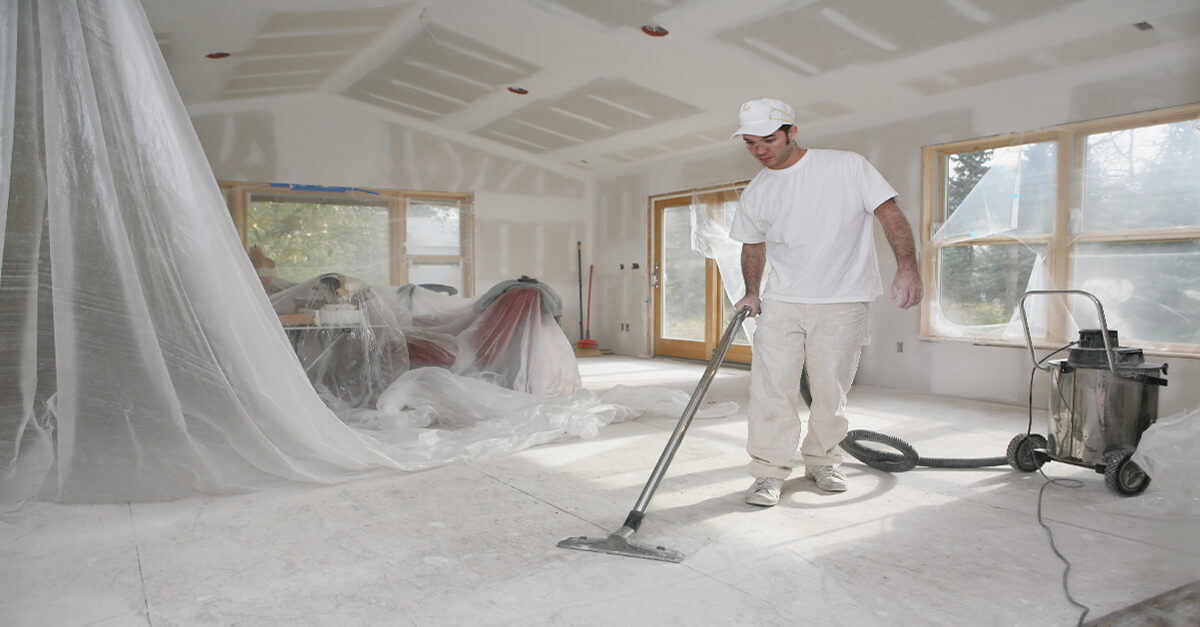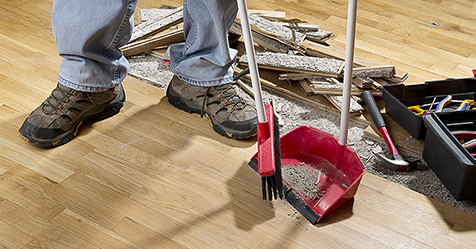With the new importance placed on cleaning since the pandemic began and all the talk of how it is one of our best defenses against the spread of the coronavirus, the past year has not been particularly profitable for many building service contractors (BSCs). Many facilities closed entirely last year. If a building is closed, there is no need to have someone clean it.
Many facilities are now reopening, but with skeleton crews. The pre-pandemic level of services aren’t needed with far fewer building users than before. Facilities that were cleaned five nights per week are now likely being cleaned two or three times per week at best. This also hurts the pocketbook.
About 30 years ago, the professional cleaning industry was known as recession resistant. Then, after a few tough periods, we became recession resilient. Now, we are survivors. Like those in other industries, we must become much more flexible, providing new add-on services when and where possible to stay afloat.
One service that may prove helpful, especially right now, is post-construction cleanup. That may sound strange. If you look out at most city skylines, you probably see few new buildings under construction. Any buildings going up today were financed and approved before the pandemic. However, there is another type of construction going on, and this one has legs.
“While demand for new office space will be lower than years past, renovation activity will increase as landlords and developers push to improve their facilities by providing more physical space for workers and improved environmental attributes such as better air handling and washroom spaces,” says Richard Branch, chief economist with Dodge Data & Analytics, an organization that tracks construction trends in the U.S.
Branch suggests in a recent 2021 state of construction cleaning forecast that building owners and managers are working overtime to reimagine their facilities so that they are healthier and adjustable to new workplace protocols due to the pandemic.
Remember, before the pandemic, the “open office” was what many office managers wanted for their staff. Now open offices are viewed as unhealthy. If business owners and managers want their staff to return to the workplace and stay well and feel safe, the open office will need to be redesigned or replaced.
This is where construction cleaning, often termed post-construction cleaning, comes into the picture. Let’s discuss this add-on service in greater detail so you can determine if it is an option for you to pursue.
Construction cleaning comes in three phases
The goal of construction cleaning is to prepare a facility so that it is ready to be used. This can be a home, office, warehouse, or school. No matter what the facility type, there are typically three phases in construction cleaning. A cleaning contractor performing this add-on service may be called on to provide cleaning for one, if not all three, of these stages:
- The rough clean—After the construction contractor has installed new framing, plumbing, electrical, windows, and walls, the cleaning contractor will be called in to do a rough clean. This consists of removing large items including debris, trash, unused materials, and disposables. Typically, the space is swept or vacuumed at this juncture.
- The specialty clean—This typically involves kitchens and restrooms along with newly installed sinks, cabinets, restroom fixtures, appliances, windows, and glass doors. Most of these items will be delivered in boxes. The construction contractor will usually unpack the boxes, but the cleaning contractor will have to dispose of them. Further, the individual items may be lined in plastic to protect them in transport. The cleaning contractor will need to remove and dispose of these packaging materials as well.
- The detail clean—Some refer to this phase as the “touchup” clean, the “final” clean, or the “punch list” clean. It certainly is not a touchup clean. The client expects the newly renovated space to be perfectly clean and ready for use at this stage. This means a final or detail clean is the more appropriate term to use. The cleaning contractor and their client should prepare a punch list. Once the detail clean is completed, the final task is to tour the new area, punching off a list of items completed and those that still need attention.
How to market your new service
Marketing construction cleaning is different from marketing janitorial services. In most cases, the cleaning contractor will be contacting construction companies, architects, and “handyman” services. According to Mike Sawchuk with Sawchuk Consulting, who works with facilities, distributors and BSCs helping them build their businesses, the key to getting construction cleanup work is “remaining fluid and flexible but acting fast.”
Often construction companies will want to line up all the services involved in the renovation before work begins. “In this case, being ‘Johnny on the spot’ can work to your advantage,” he says.
When it comes to marketing, Sawchuk has several other suggestions for BSCs including:
- Develop a strong, compelling, clear, and focused message about the uniqueness of your company and your service.
- Have a target market including geographic area, size of project you are interested in, scope of work, and type of client you prefer to work with.
- Website messaging, blogging, and even more traditional direct mail can prove highly effective marketing tools.
- Proposals should be clear, persuasive, and detailed.
“One more thing, be ready to negotiate,” says Sawchuk. “Be flexible on pricing but firm. The BSC’s job is to get the account, but make sure there is enough profit in the job to make it worth having.”
Tools of the trade
Sawchuk recommends that BSCs work with janitorial distributors familiar with this type of cleaning. “Construction cleaning can be particularly challenging, and you need a partner on your side for this type of work,” he says.
The cleaning tools and equipment needed for construction cleaning varies depending on the project. But typically, Sawchuk says these are the necessary tools of the trade:
- Face masks and, in some cases, respirators
- Nitrile gloves and heavy-duty work gloves
- Goggles/eye protection
- Cleaning solutions such as disinfectants on the EPA’s N-List (disinfectants for coronavirus), degreasers, glass cleaners, stainless steel cleaners, floor-care products and finishes. These should be available in a variety of options such as ready-to-use, free-pour concentrates, closed-loop concentrates dispensed through a dispenser, and ready-to-dispense products.
- Backpacks and cannisters, wet/dry vacs, as well as more detailed cleaning equipment such as no-touch cleaning systems.
“View no-touch cleaning systems as all-purpose cleaning equipment. They can be used for high-level cleaning and disinfecting of walls, stairs, surfaces, counters, [restroom] fixtures, as well floors,” Sawchuk says.
Let’s talk about construction cleaning pricing
A discussion on construction cleaning is not complete without discussing pricing. The good news is that if bid correctly this service is typically quite lucrative. The bad news is that there is no one way to bid for construction cleaning. There are simply too many variables. For instance, what if the client only wants the final detail clean? That could either mean more or less work for the BSC depending on if the construction contractor has been doing some of the cleanup as they go.
However, there are two typical options when it comes to pricing:
- Charge by the hour per worker. With a four-person crew, for example, the contractor will need to “guestimate” how much time it will take to complete the work.
- Charge by the square foot. A square-footage charge is often more applicable to new construction cleaning, not renovation work. However, it still can be appropriate. Complicating matters, however, is no “standard” charges per square foot exist for this type of work in the U.S.
For contractors new to construction cleaning, what might prove most helpful when it comes to pricing is to turn to an astute janitorial distributor once again. “The good distributor wants their customer to do well. They will offer suggestions not only on what products to use, but on pricing as well. This can help immeasurably, ” Sawchuk says.




